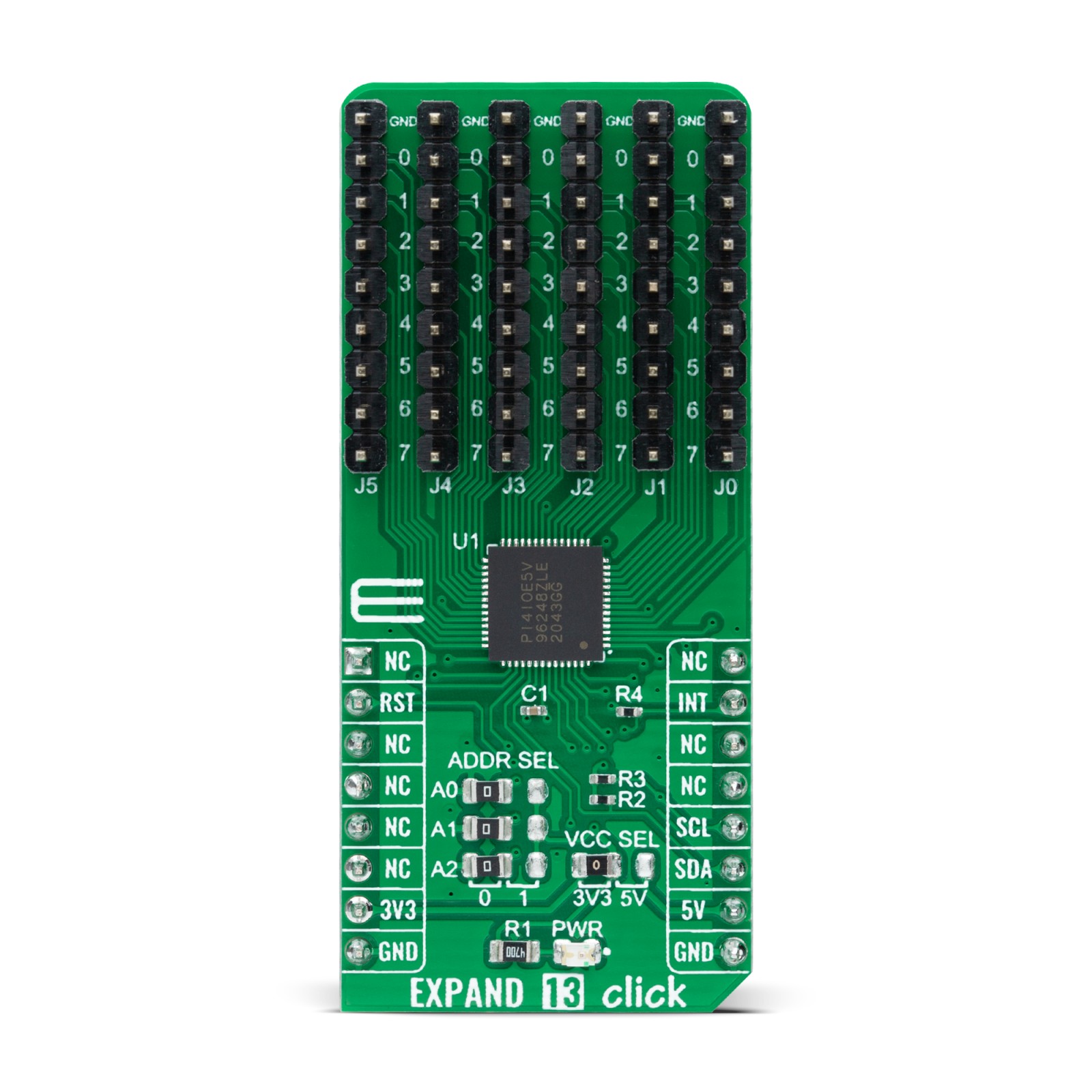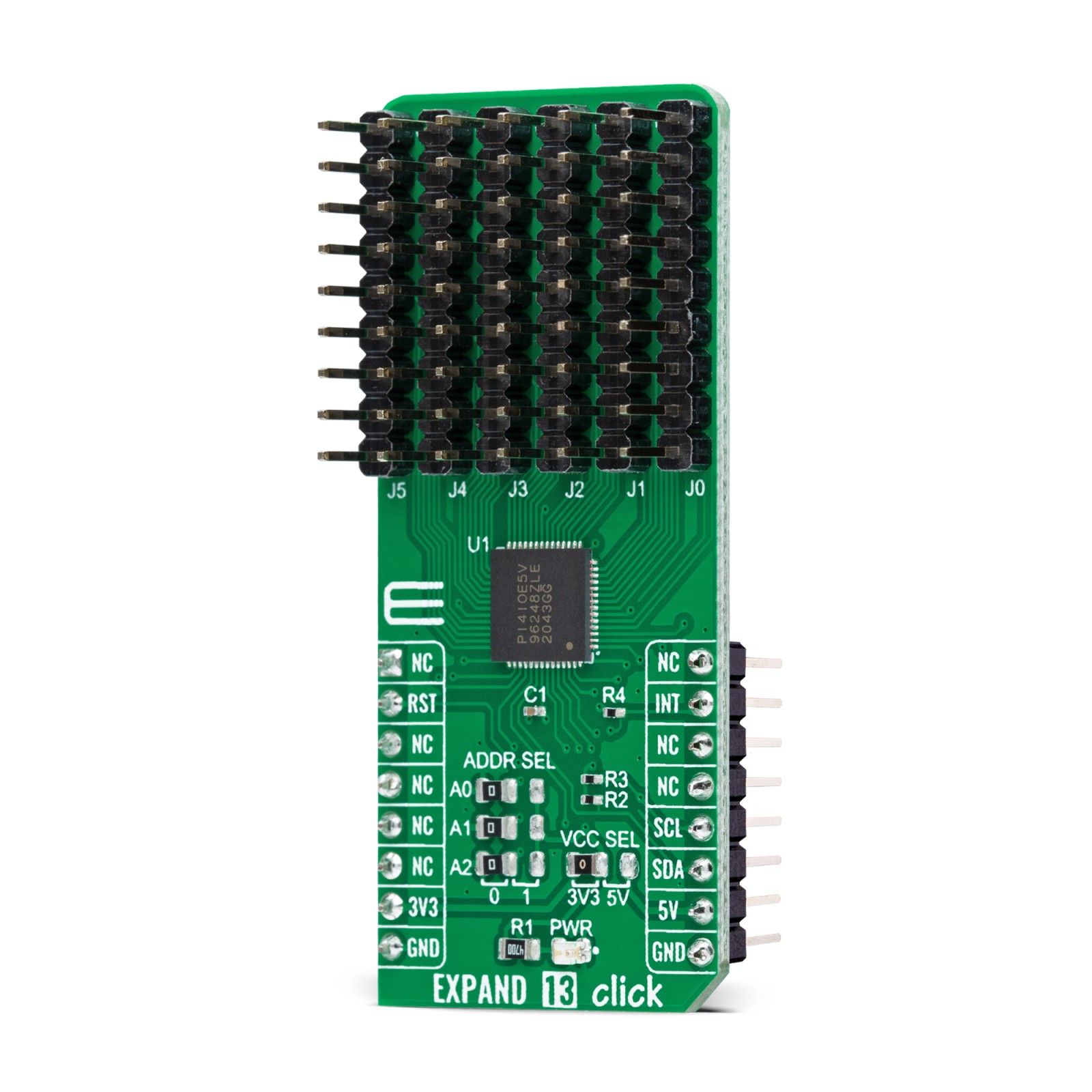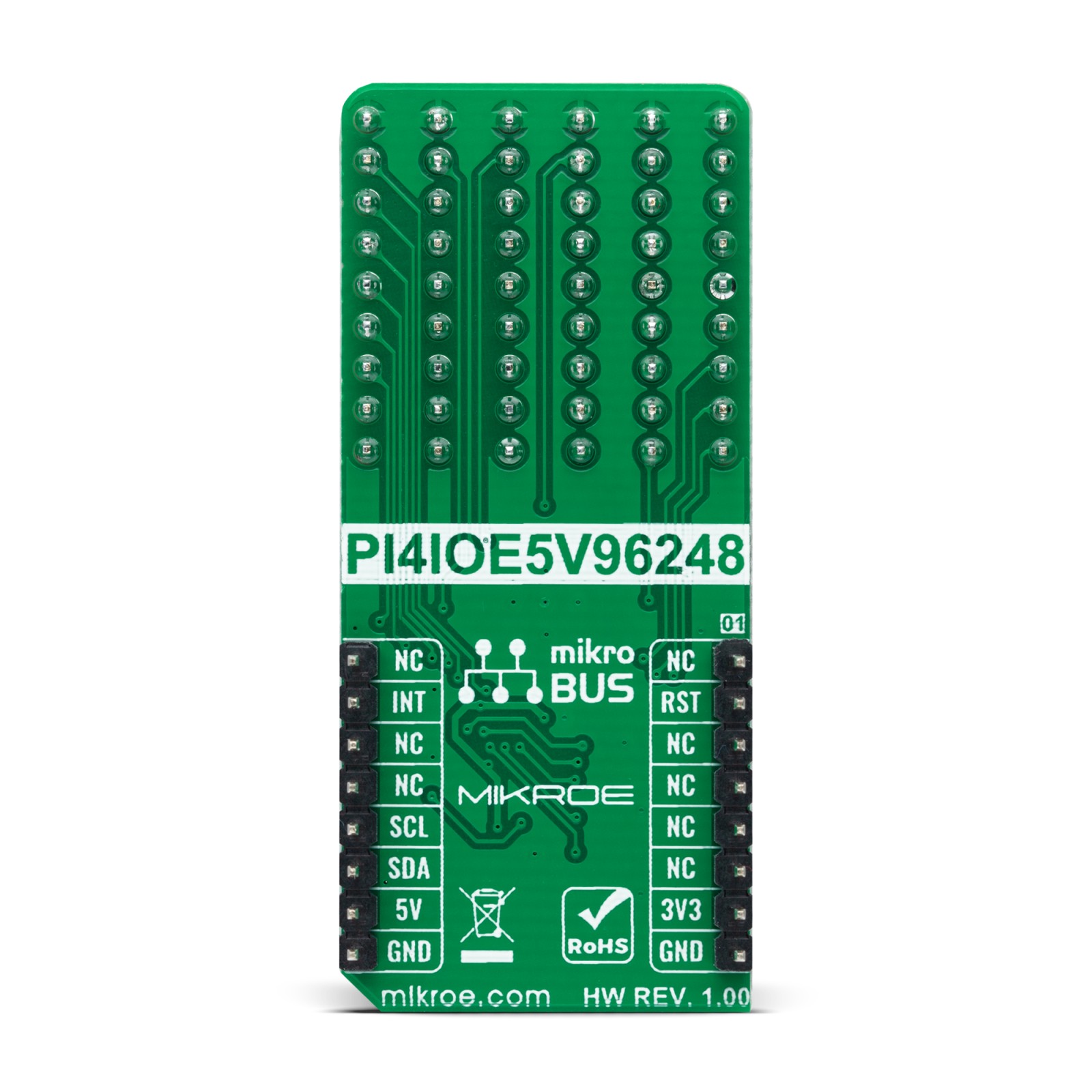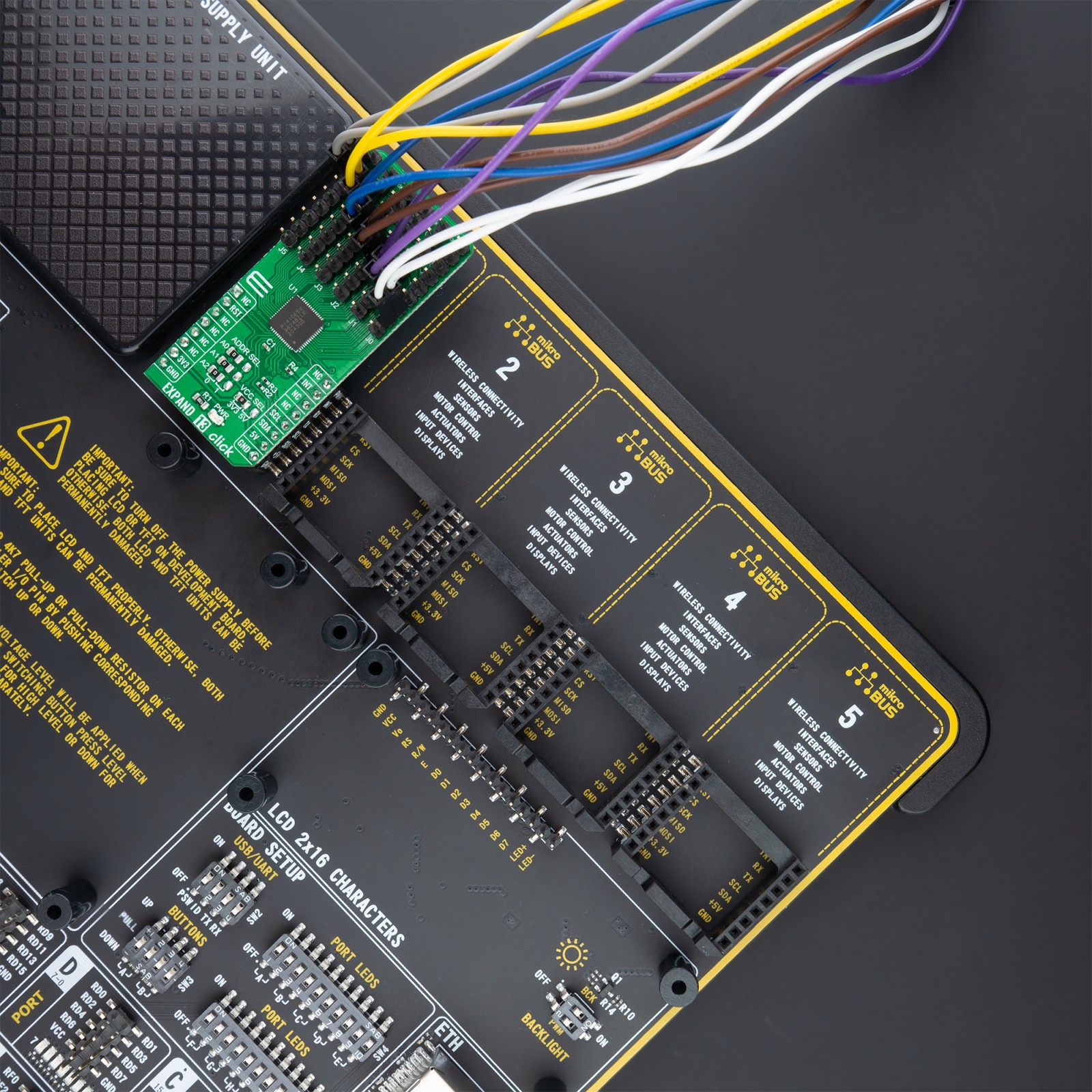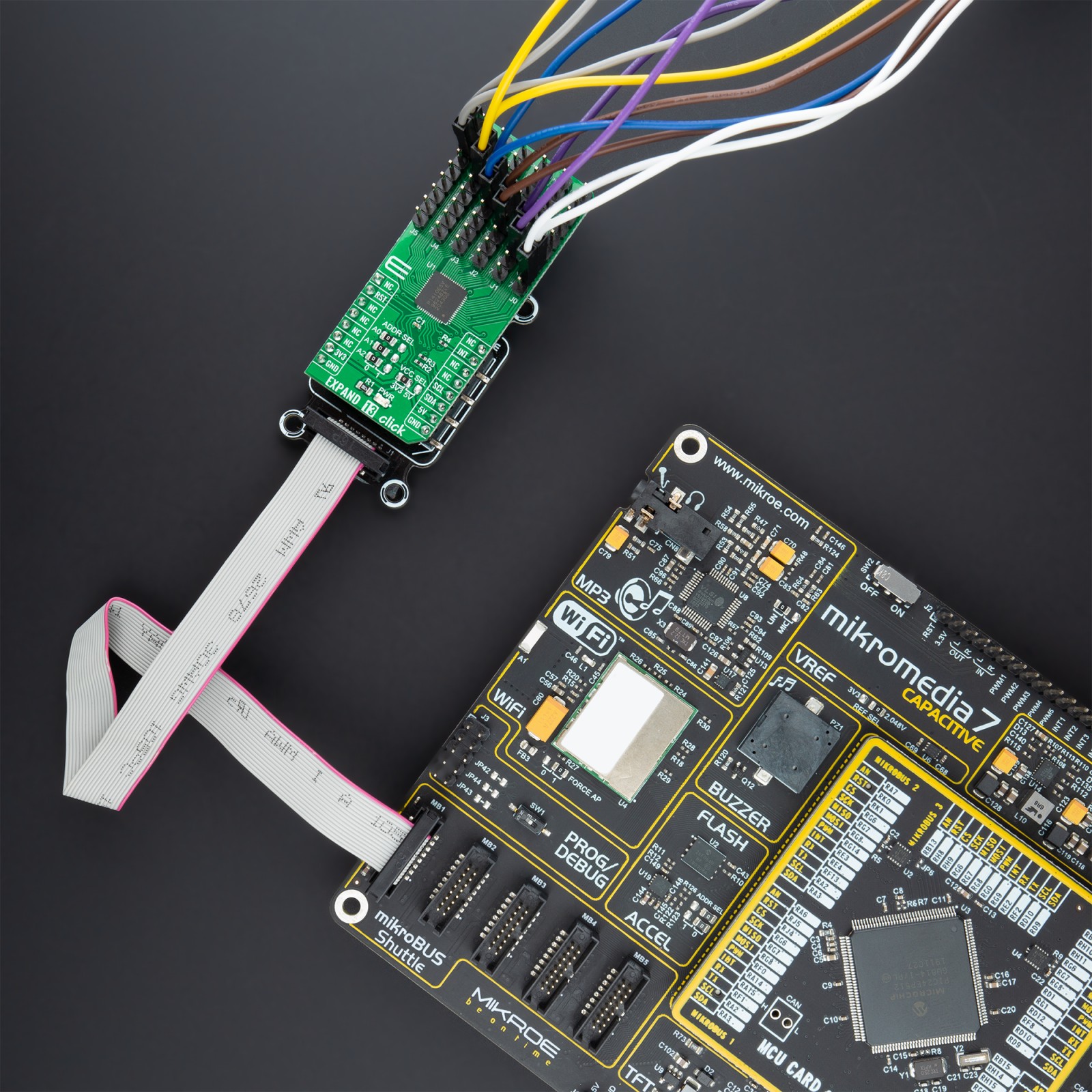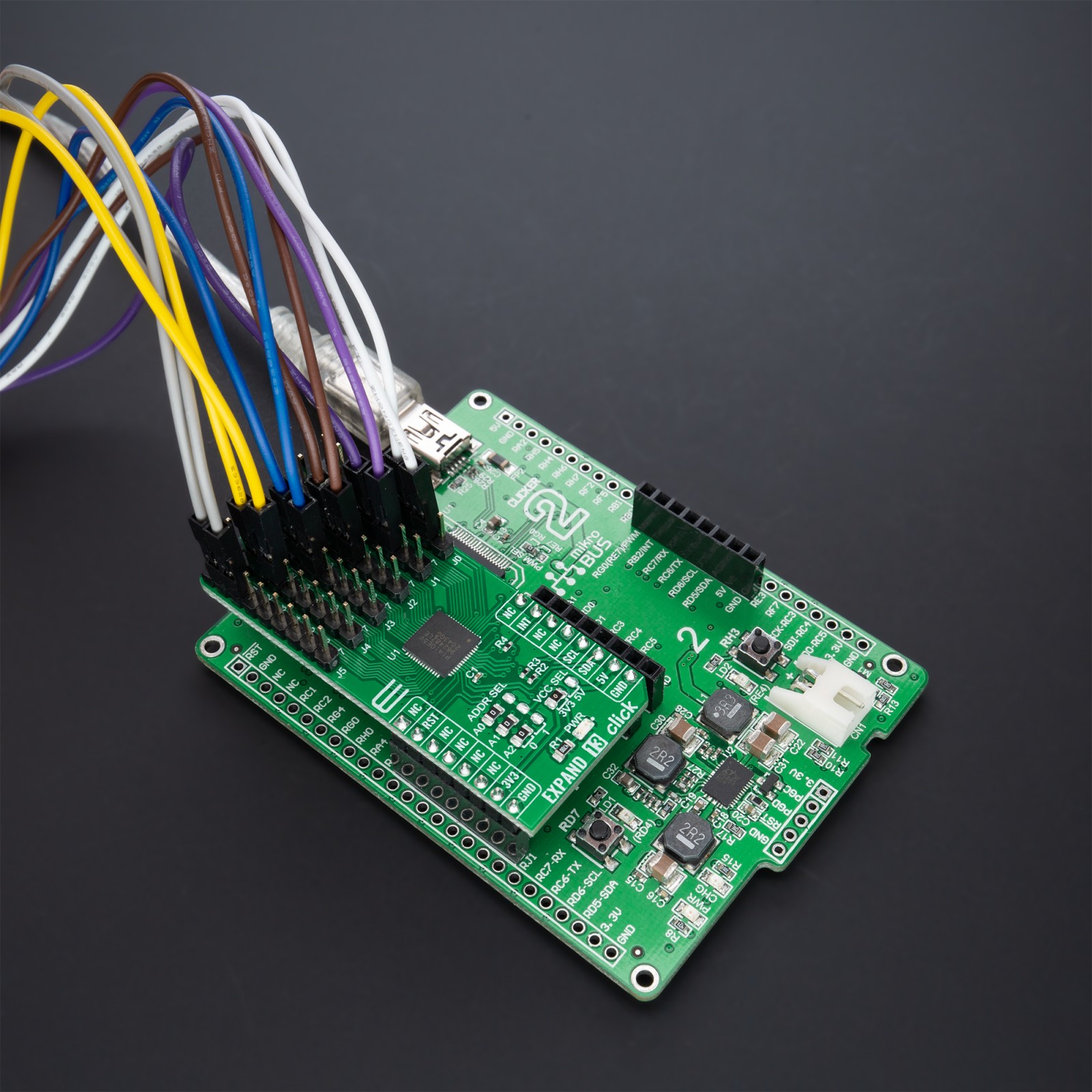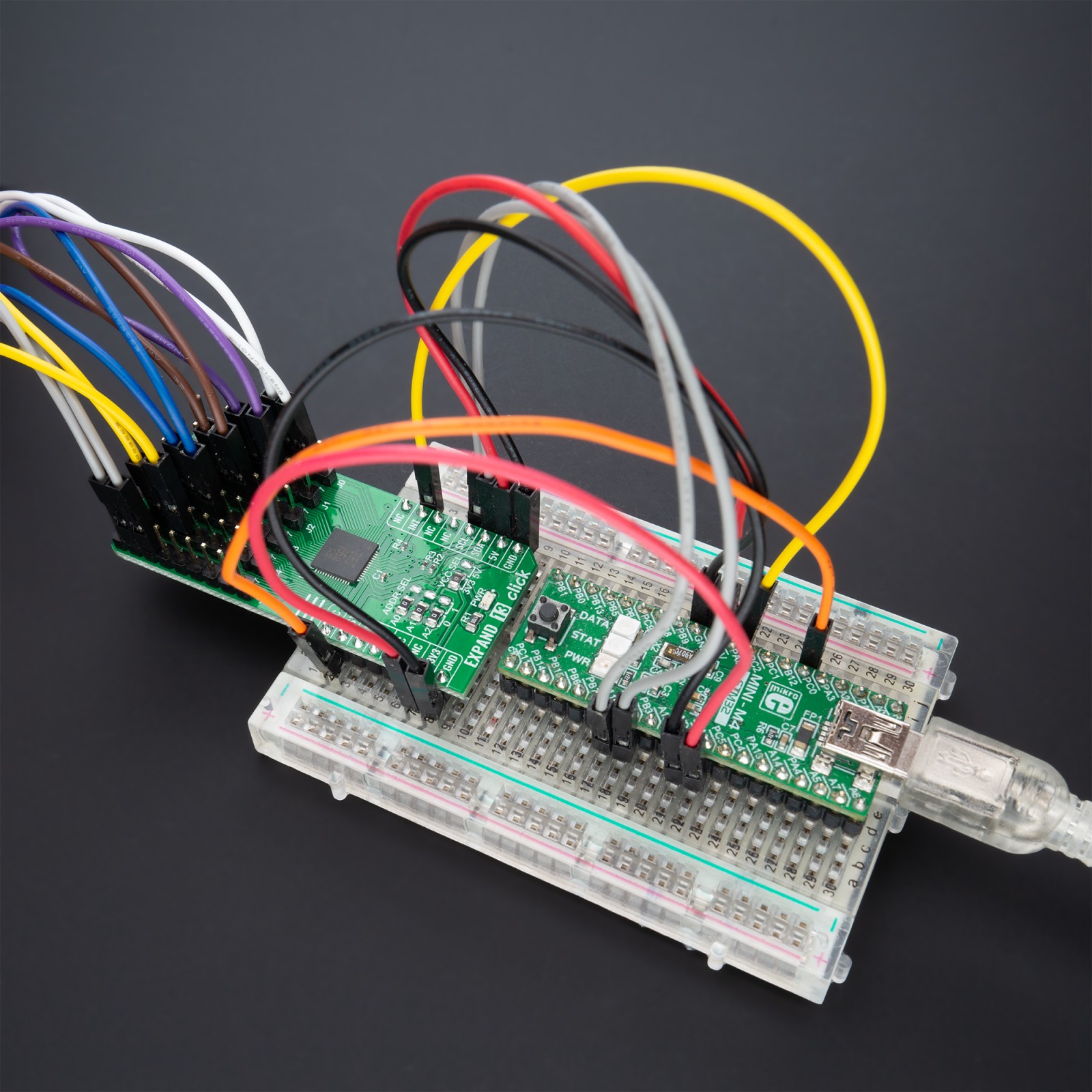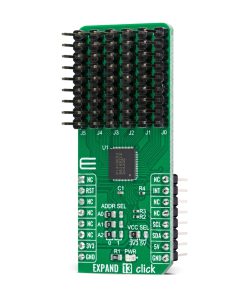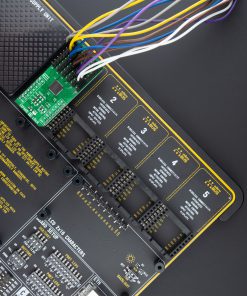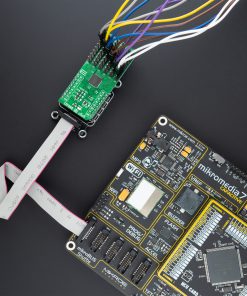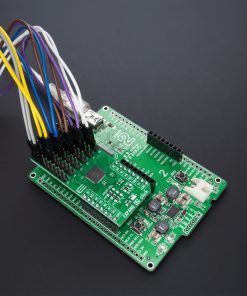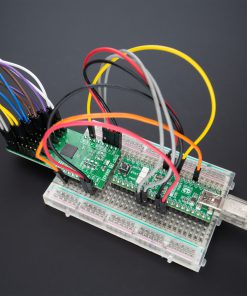Expand 13 Click
R330.00 ex. VAT
Expand 13 Click is a compact add-on board that contains a multi-port I/O expander. This board features the PI4IOE5V96248, a 48-bit general-purpose I/O expander providing remote I/O expansion for most MCU’s families from Diodes Incorporated. The PI4IOE5V96248 comes in a 6-channel configuration and allows easy addition of I/O through a standard I2C serial interface. It has a built-in level shifting feature that makes it highly flexible in power supply systems where communication between incompatible I/O voltages is required. It also contains a reset and interrupts feature that informs the MCU of incoming data on its ports without communicating via the serial bus. This Click board™ provides a simple solution when additional I/Os are needed while keeping interconnections to a minimum in system monitoring applications, industrial controllers, portable equipment, and many more.
Expand 13 Click is supported by a mikroSDK compliant library, which includes functions that simplify software development. This Click board™ comes as a fully tested product, ready to be used on a system equipped with the mikroBUS™ socket.
Stock: Lead-time applicable.
| 5+ | R313.50 |
| 10+ | R297.00 |
| 15+ | R280.50 |
| 20+ | R269.94 |

